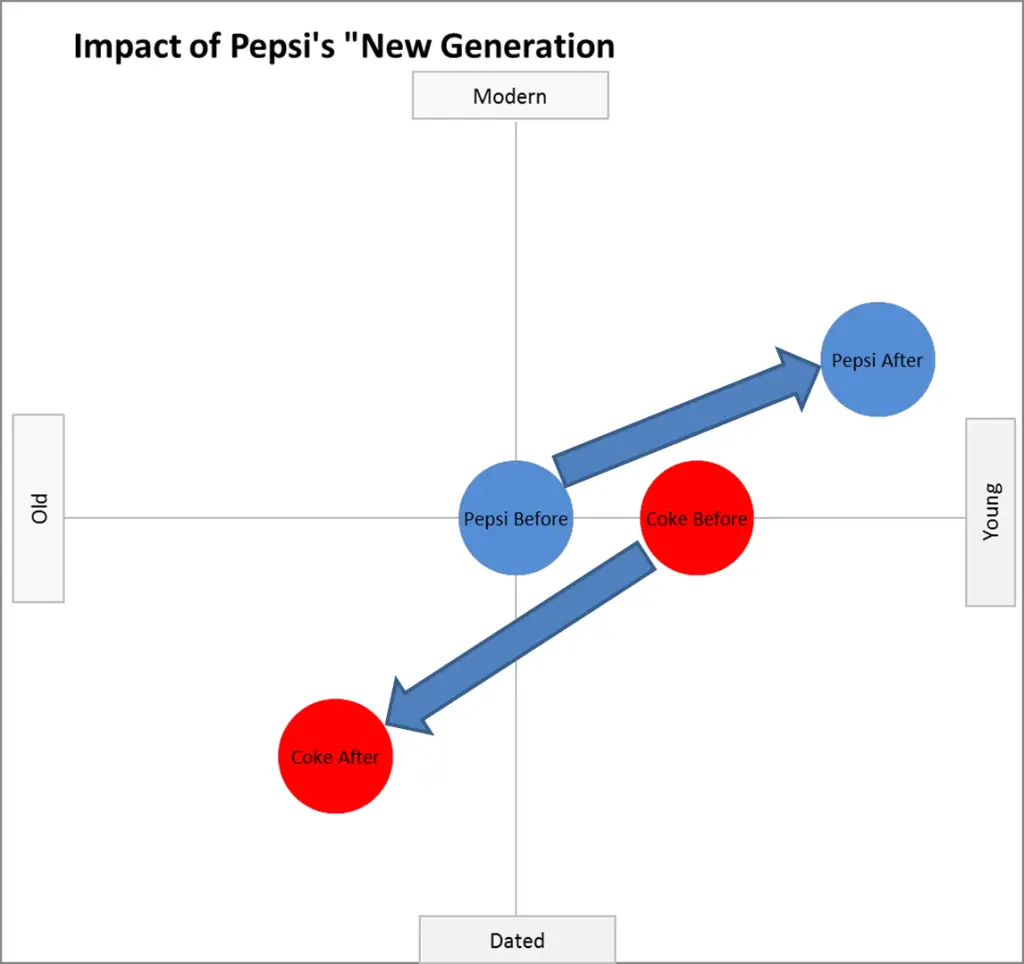Contents
What is Positioning?
Before we take a look at repositioning, let’s quickly recap what positioning is itself. Positioning is a core concept in marketing, as it lays the foundation for how a brand is perceived in the marketplace.
Positioning can be defined as the process of creating a understanding of a brand by consumers, in comparison to their understanding of key competitors .
Positioning is typically built around key benefits, product features, attributes and personality of the brand. Ideally, consumers will associate these key benefits and features with our brand and perceive that our offering is superior in meeting their needs, as opposed to competitive brands.
Without clear and distinctive positioning brands are unlikely to attract customers, especially in product categories where consumers have a choice between brands. In other words, we use positioning to “stand out” in the market and attract customers.
Unfortunately, there are times when a brand’s positioning must be altered for various reasons, and this is where repositioning comes in.
In this article, we will examine the five ways repositioning can occur and how it affects the market perception of a brand. You can scroll down to read the full article, or review the following video…
What is Repositioning?
Repositioning is the process of intentionally or unintentionally changing how a brand is perceived in the marketplace.
It involves altering the consumer’s view of the brand, which may result from changes in the:
- product,
- target market,
- competitors, or
- consumer needs.
Brands may intentionally reposition themselves to remain competitive, while others may be reposition due to market changes or competitor actions.
Repositioning can be a challenging procedure that calls for in-depth knowledge of the target market’s requirements. It’s important to monitor a brand’s position throughout time and periodically ask customers how they feel about the brand.
The Five Different Ways of Repositioning
- Choosing a New Target Market
If a brand’s existing target market is not doing well, or if there is a major competitor impacting the brand, repositioning may be executed by choosing a new target market.
Brands may be able to reinvigorate themselves by going after a less competitive market that their product may be better suited for.
Changing the marketing mix and communication strategies to appeal to the new target market may be necessary. For example, an iced coffee brand could reposition itself from targeting outdoor workers to office workers who may need a mental boost. This example is shown in the following case study video…
- Targeting a New Use or Need
Repositioning can also involve changing the purpose of the product to target a new use or need.
For example, vinegar, which was primarily a food product, has been repositioned as a cleaning product due to the growing need for natural cleaning solutions.
- New Competitors
New competitors entering the market can reposition existing competitors.
For instance, Uber has repositioned taxis, which were once seen as convenient, to now be viewed as inconvenient. Similarly, Netflix and other streaming platforms have had the same effect on traditional movie theaters.
- Changing Consumer Needs
Changes in consumer needs can reposition a brand positively or negatively.
For example, people are now more conscious about health and diet, which has led to traditional fast-food players investing in healthier food options.
Also, hotels that were once built around the infrastructure of the hotel may need to offer more activities and interaction to meet the changing needs of their customers.
- Deliberate Competitor Actions
Competitor actions can also reposition a brand intentionally or unintentionally.
For example, Pepsi’s deliberate targeting of Coke as the “choice of a new generation” repositioned Coke as an old brand, prompting them to introduce New Coke to make their product more exciting.
Key Takeaways
Repositioning is an essential strategy for brands that want to remain competitive in the marketplace. Brands may need to reposition themselves intentionally (or may be unintentionally repositioned) to adapt to changes in the market or consumer needs.
The five different ways of repositioning include:
- choosing a new target market,
- targeting a new use or need,
- being impacted by new competitors,
- changing consumer needs, and
- deliberate existing competitor actions.
Brands must understand their target audience and their needs to successfully reposition themselves. Tracking a brand’s position over time and frequently checking with consumers can provide valuable insights that can inform the repositioning process. Using time-based perceptual maps will be very helpful for this purpose.
By understanding the different ways repositioning can occur, brands can make informed decisions that will positively impact their perception in the marketplace.
Related Articles
- Repositioning on a Perceptual Map
- Pepsi and Coke Positioning in the Cola Wars
- New Coke: Designed to Win Back Positioning
- What is Over-Positioning in Marketing?
- Positioning Strategy
- Perceptual Maps: Best Practice
- Top 12 Tips for Using Perceptual Maps
- Get the Most Out of Your Perceptual Maps

